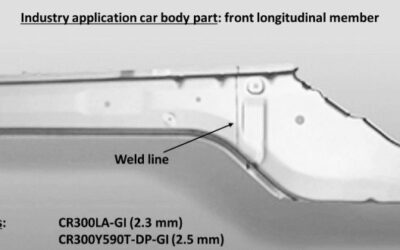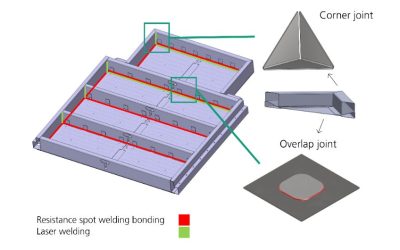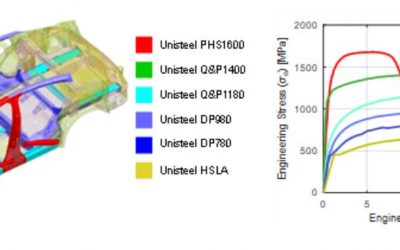AHSS Insights Blog
Digitalization In Tailor Welded Blanking: Combining Numerical Simulations To Process Increasing Material Strengths
Efficient energy and resource use in automotive engineering is a major challenge that can only be overcome with innovative solutions. A cost-effective and resource-saving approach is the use of digital methods in production. [video width="1920" height="1080"...
WorldAutoSteel Releases Latest AHSS Application Guidelines
Smarter Engineering for Tomorrow’s Vehicles In the fast-evolving world of automotive engineering, the ability to innovate safely and efficiently is paramount. Advanced High-Strength Steels (AHSS) have become the backbone of modern vehicle design. In less than a...
Mild Steels to Advanced Steels: The Phases Make The Difference
Steel’s performance starts at the atomic scale, where tiny changes in how iron and carbon atoms arrange themselves create dramatically different properties. This article explores how those atomic structures evolve into the ferrite, austenite, and advanced...
Life Cycle Assessment of Welding Methods for EV Battery Enclosures | Environmental Impact Comparison
With the rise of electric vehicles, evaluating the environmental impact of each manufacturing process is essential. This article presents an EV battery enclosure welding LCA to compare the sustainability of different joining methods. As automotive manufacturers strive...
Press Hardening Steel Grades: Unlocking Strength Through Innovation
You’ll find most of this content as part of our page on Press Hardening Steel Grades, but this month, we want to highlight it in our AHSS Insights blog. Thanks to Eren Billur, Ph.D., President, Billur Metal Form, for providing this information. What...
Four Steps to Mitigate Liquid Metal Embrittlement When Welding Steel
Liquid Metal Embrittlement (LME) during Resistance Spot Welding (RSW) can cause cracks when welding advanced high strength steels. Recent advances in steel metallurgy, resistance spot welding processing and accompanying simulation tools have substantially improved the...





